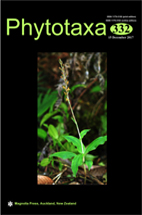Type: Article
Published: 2017-12-19
Page range: 172–180
Abstract views: 16
PDF downloaded: 1
Gerhardtia sinensis (Agaricales, Lyophyllaceae), a new species and a newly recorded genus for China
State Key Laboratory of Applied Microbiology Southern China, Guangdong Provincial Key Laboratory of Microbial Culture Collection and Application, Guangdong Open laboratory of Applied Microbiology, Guangdong Institute of Microbiology, Guangzhou, 510070, China
State Key Laboratory of Applied Microbiology Southern China, Guangdong Provincial Key Laboratory of Microbial Culture Collection and Application, Guangdong Open laboratory of Applied Microbiology, Guangdong Institute of Microbiology, Guangzhou, 510070, China
State Key Laboratory of Applied Microbiology Southern China, Guangdong Provincial Key Laboratory of Microbial Culture Collection and Application, Guangdong Open laboratory of Applied Microbiology, Guangdong Institute of Microbiology, Guangzhou, 510070, China
State Key Laboratory of Applied Microbiology Southern China, Guangdong Provincial Key Laboratory of Microbial Culture Collection and Application, Guangdong Open laboratory of Applied Microbiology, Guangdong Institute of Microbiology, Guangzhou, 510070, China
State Key Laboratory of Applied Microbiology Southern China, Guangdong Provincial Key Laboratory of Microbial Culture Collection and Application, Guangdong Open laboratory of Applied Microbiology, Guangdong Institute of Microbiology, Guangzhou, 510070, China
Fungi
Lyophyllaceae
phylogenetics
subtropical fungus
taxonomy

